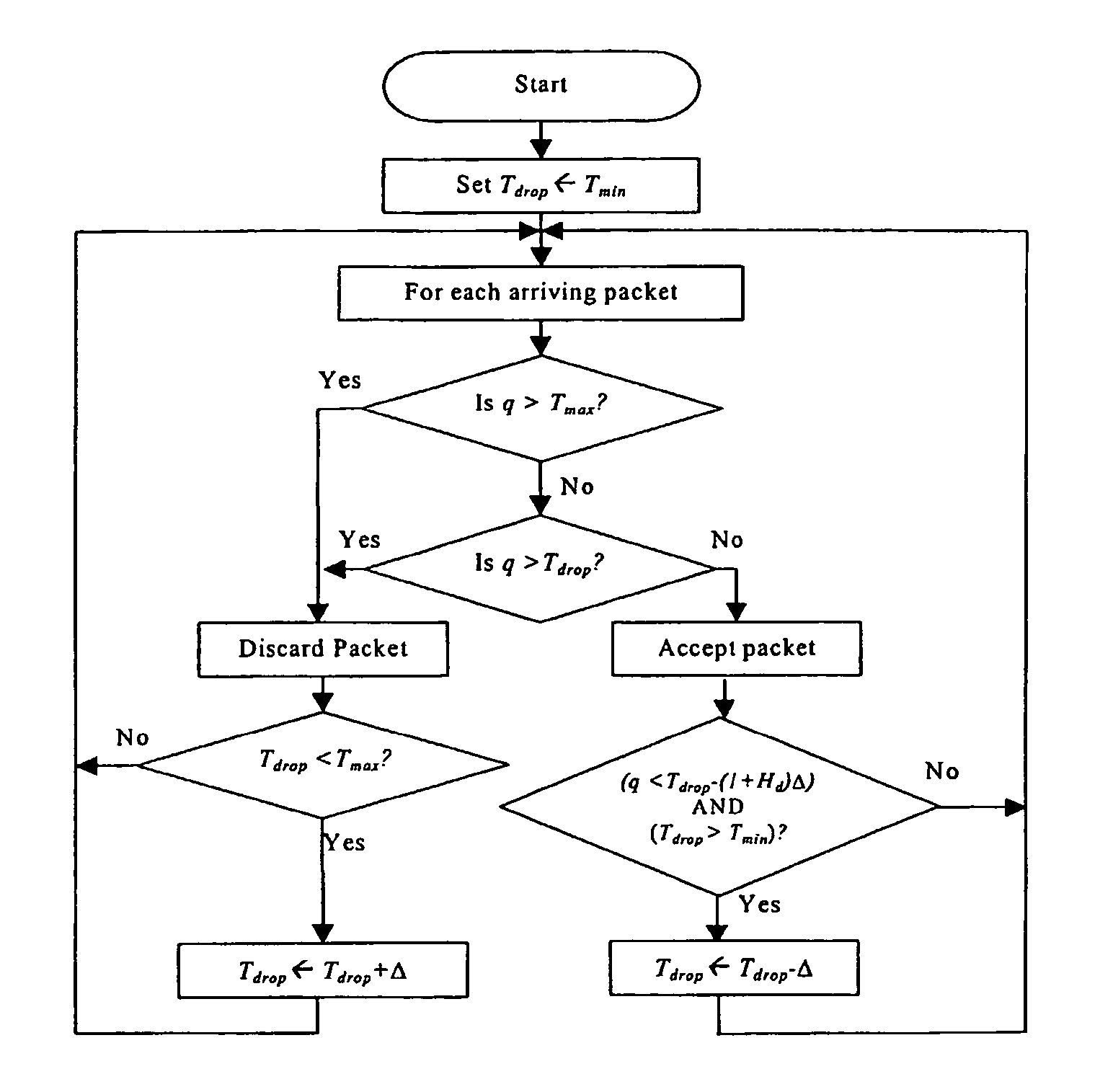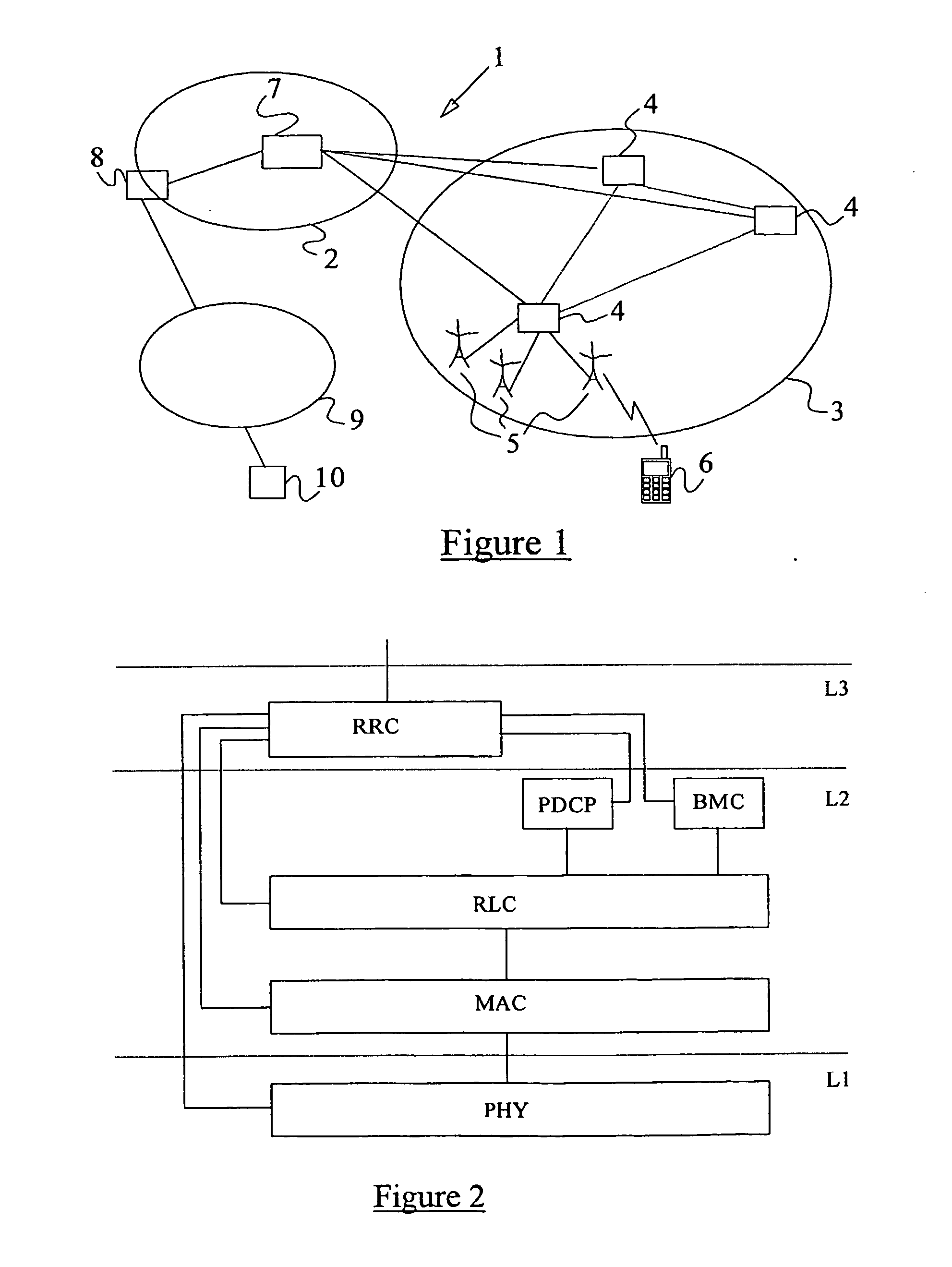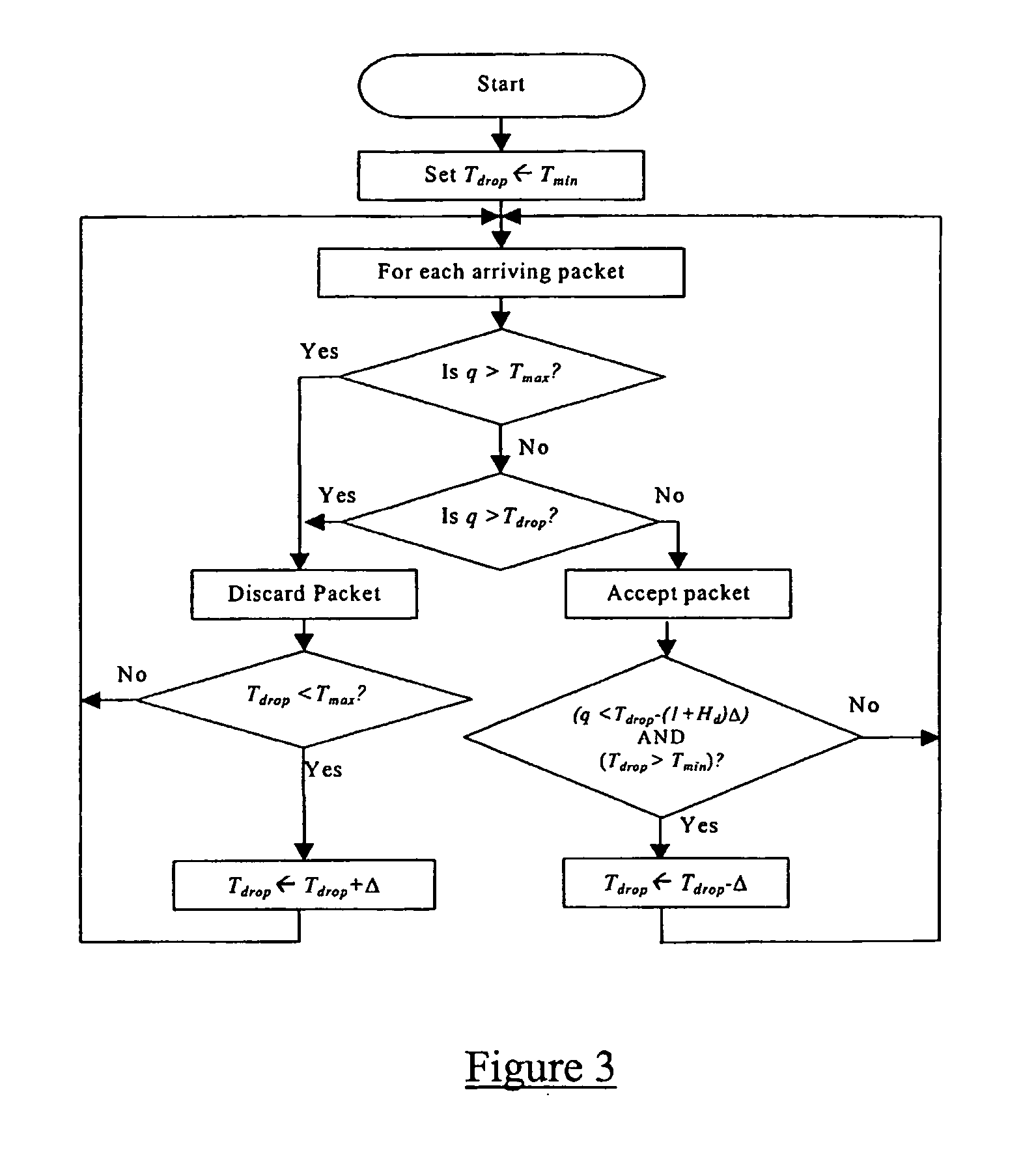Congestion and delay handling in a packet data network
a packet data network and delay technology, applied in data switching networks, frequency-division multiplexes, instruments, etc., can solve the problems of slow response of tcp, congestion of links, and inability to apply the probabilistic view adopted by the red mechanism to this type of buffering problem, etc., to achieve low bandwidth, high latencies, and low bandwidth
- Summary
- Abstract
- Description
- Claims
- Application Information
AI Technical Summary
Benefits of technology
Problems solved by technology
Method used
Image
Examples
Embodiment Construction
[0097] FIG. 1 illustrates schematically a UMTS network 1 which comprises a core network 2 and a UMTS Terrestrial Radio Access Network (UTRAN) 3. The UTRAN 3 comprises a number of Radio Network Controllers (RNCs) 4, each of which is coupled to a set of neighbouring Base Transceiver Stations (BTSs) 5. BTSs are sometimes referred to as Node Bs. Each Node B 5 is responsible for a given geographical cell and the controlling RNC 4 is responsible for routing user and signalling data between that Node B 5 and the core network 2. All of the RNCs are coupled to one another. A general outline of the UTRAN 3 is given in Technical Specification TS 25.401 V3.2.0 of the 3rd Generation Partnership Project. FIG. 1 also illustrates a mobile terminal or User Equipment (UE) 6, a Serving GPRS Support Node (SGSN) 7 and a GPRS Gateway Support Node (GGSN) 8. The SGSN 7 and the GGSN 8 provide packet switched data services to the UE 6 via the UTRAN (with the GGSN being coupled to the Internet 9).
[0098] User ...
PUM
 Login to View More
Login to View More Abstract
Description
Claims
Application Information
 Login to View More
Login to View More - R&D
- Intellectual Property
- Life Sciences
- Materials
- Tech Scout
- Unparalleled Data Quality
- Higher Quality Content
- 60% Fewer Hallucinations
Browse by: Latest US Patents, China's latest patents, Technical Efficacy Thesaurus, Application Domain, Technology Topic, Popular Technical Reports.
© 2025 PatSnap. All rights reserved.Legal|Privacy policy|Modern Slavery Act Transparency Statement|Sitemap|About US| Contact US: help@patsnap.com



